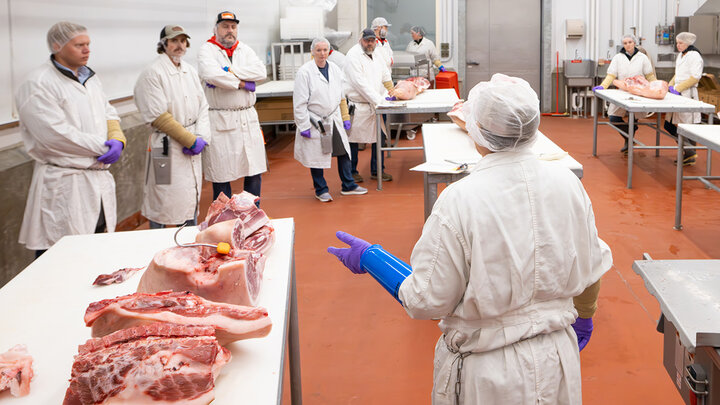For many farm and ranch families, bringing children or grandchildren into the operation is the ultimate goal. Successfully bringing additional family members into the operation may require some creativity as all parties need to maintain a viable standard of living. This article is part of a series that will highlight ideas and tactics for bringing another family member into the operation. If this is the first article you are seeing in this series, I would encourage you to go back to the previous articles for background and additional guidance.
Gifting Shares of Farm Business Ownership
A strategy that is gaining popularity is the gifting of shares or a percentage of the business from the owner to their heirs. In this article, the person gifting shares, or ownership is called the donor, and the person receiving shares or ownership is the donee.
To employ this strategy, you must have an entity structure that allows for the transfer of shares or changes to the percentage of ownership, such as a partnership, LLC, or corporation. These shares or a percentage of ownership could be gifted to the done while the donor is alive or at the donor’s death.
Gifting shares or a percentage of the business can be tricky. Work with your financial team to determine the liabilities, asset basis, and value. When gifting shares or a percentage of the business, you may be able to use the annual gift exclusion or the lifetime gifting exclusion. This should be done with the guidance of an attorney and accountant. See previous articles for more details.
Farm Business Transfer Considerations
There are some important considerations when passing ownership during life.
First, how quickly will the ownership transfer? Is it a one-time gift or a progressive gift where the ownership percentage of the donee increases each year, subsequently decreasing the donor’s ownership?
Next, does owning shares or a percentage of the business also transfer the management of the business? Depending on the entity structure, shares could be voting or non-voting, allowing the donor to decide who has decision-making power in the business and who does not. Often, donors pass voting shares to on-farm heirs and non-voting shares to non-farm heirs. A slow transfer of the business to the donee also allows the shift of management to occur slowly. After each gift, the donee could have a greater voice in the management of the business.
Another consideration is the transfer of income. The change in the ownership percentage will ripple through the business. Gifting shares or a percentage of ownership could help the donor reduce their tax liability. However, it will also likely decrease their income. If the donor does not have assets outside of the farm/ranch for retirement, this reduction of income could be problematic.
A disadvantage of gifting assets during life is the loss of the step up in basis. The donee would retain the donor’s basis in the asset. In other words, if the donee sells the asset, they will pay capital gains on the donor’s basis. Other challenges with a lower basis may also arise, such as lost depreciation. Understanding these disadvantages is critical.
Gifting during life has some advantages for the on-farm heir, as they are building ownership in the business. A gift strategy could provide them with the opportunity to borrow against the business’s equity. When assets are gifted during life, there is a risk that the assets could be “lost.” The shares could be sold or seized by creditors. Additional agreements, such as a buy-sell agreement, may be needed to mitigate some of this risk.
Transferring Ownership at Death
Ownership transfer does not necessarily have to take place during life. It can be done at the death of the donor. In this case, the donor could decide to leave on-farm heir(s) a larger percentage of the operation in their estate plan as compensation for their sweat equity. A large advantage of this strategy is that the donee would receive the step up in basis.
A simple example is 1% per year that the donee worked the farm or ranch. If a donee was on the farm for 30 years at the donor’s death, the donee would receive the first 30% of the operation's assets. The remaining assets could be split equally among farming and non-farming heirs.
Waiting to gift shares or a percentage at or after death leaves the donor in control while they are alive. It also provides them with the flexibility to change their estate plan. The possibility of a donor changing their estate plan is a risk to the on-farm heir. Especially if this is the primary form of compensation the on-farm heir was offered to return to the operation.
Transferring ownership shares is not the only way to compensate family members. When developing a strategy to bring the next generation back into the operation, consider the viable standard of living for both the owners and the heirs. Gifting too much while owners are alive can be problematic. Look for future articles outlining other strategies on the Center for Ag Profitability website at cap.unl.edu.




